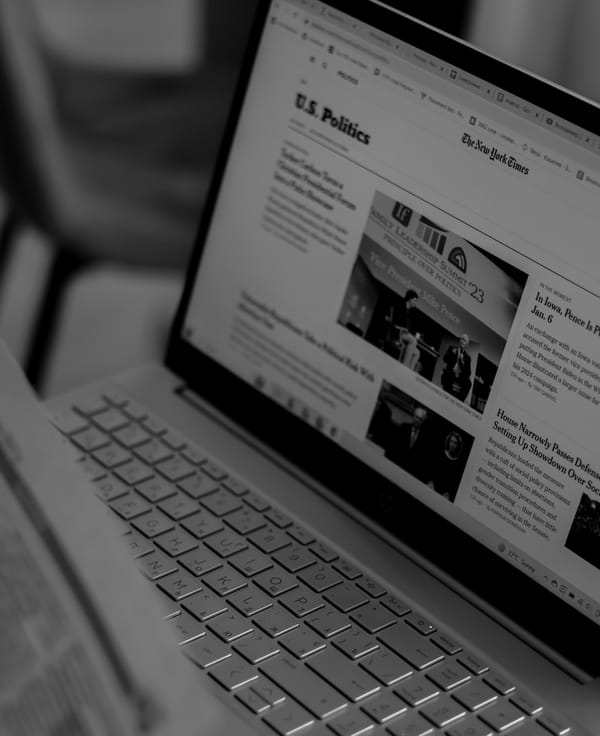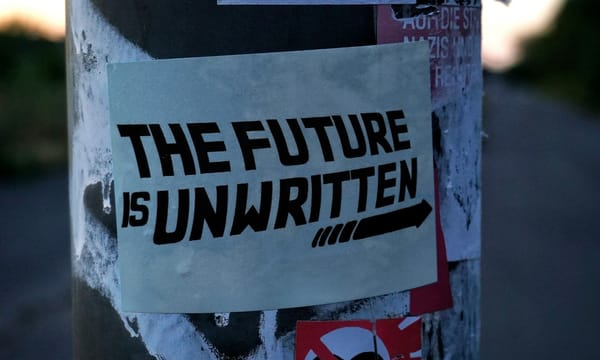COINTELPRO Never Died: Domestic Surveillance in the Age of Trump
As the United States careens deeper into an authoritarian phase—with loyalty tests, political purges, and surveillance expanding by the day—understanding the blueprints of domestic repression is no longer academic. It’s a matter of resistance literacy, and COINTELPRO is the blueprint.

“The greatest threat to internal security.” That’s what the FBI called the Black Panther Party in 1969. Not the Klan. Not the Mafia. A group feeding kids free breakfast and demanding healthcare was marked for destruction.
As the United States careens deeper into an authoritarian phase—with loyalty tests, political purges, and surveillance expanding by the day—understanding the blueprints of domestic repression is no longer academic. It’s a matter of resistance literacy, and COINTELPRO is the blueprint.
Let's break it down.
What Was COINTELPRO?
COINTELPRO (Counterintelligence Program) was a covert domestic spying and sabotage operation run by the FBI from 1956 to 1971, under the direction of J. Edgar Hoover.
Though Hoover did not technically create the FBI—founded in 1908 as the Bureau of Investigation—he took over in 1924, transformed it into an intelligence empire, and renamed it the Federal Bureau of Investigation in 1935. Hoover remained director until 1972 and built a culture of secrecy, political manipulation, and deep hostility toward leftist movements, especially Black resistance.
COINTELPRO’s mission:
“Expose, disrupt, misdirect, discredit, or otherwise neutralize” the individuals and groups that challenged white supremacy, capitalism, U.S. militarism, or imperial power.
It was not just surveillance. It was psychological warfare against movements that dared to imagine liberation.
The Original Playbook – Tactics and Targets
Tactics
Primary Targets:
- Dr. Martin Luther King Jr. – Targeted for his growing critique of capitalism and U.S. militarism. As he became more radical (supporting labor movements and opposing the Vietnam War), the FBI escalated harassment—culminating in an anonymous letter urging him to commit suicide.
- Malcolm X – Targeted because he could not be bought, co-opted, or controlled. The FBI stoked tensions between him and the Nation of Islam, monitored his travels, and feared his global influence as he pushed for Black self-determination and international solidarity.
- Fred Hampton – Viewed as a uniquely dangerous figure for uniting poor Black, white, and Latino people under the Rainbow Coalition. At age 21, he was assassinated in his sleep during a raid orchestrated by the FBI and Chicago police.
- The Black Panther Party – Targeted for combining revolutionary self-defense with community care. Their free breakfast programs, health clinics, and educational initiatives showed what liberation could look like outside the state. The FBI labeled them the #1 threat to U.S. internal security.
- The American Indian Movement (AIM) – Targeted for occupying Wounded Knee, defending treaty rights, and refusing to assimilate. COINTELPRO infiltrated and destabilized them during standoffs with federal agencies.
- Puerto Rican Independence Activists – Treated as insurgents and foreign enemies for resisting U.S. colonial control of Puerto Rico. They were heavily surveilled and criminalized across generations.
- Antiwar students, feminists, and socialists – Anyone resisting the Vietnam War, U.S. imperialism, or patriarchal capitalism was fair game.
COINTELPRO attacks movements, not individuals. Its goal was to destroy coalitions, discredit ideologies, and make revolution unthinkable.
COINTELPRO’s Authoritarian Legacy
COINTELPRO was not an exception. It was a domestic variant of U.S. counterinsurgency doctrine, similar to the CIA’s global regime-change operations. While the CIA overthrew governments abroad, the FBI targeted movements at home. Same tools. Same logic.
The legacy of COINTELPRO survives in:
- DHS fusion centers and “threat assessment” programs.
- Predictive policing software and data surveillance.
- “Domestic extremism” frameworks that disproportionately target Black, Brown, and leftist organizers.
- The criminalization of protest under anti-riot laws, terrorism statutes, and RICO charges.
COINTELPRO taught the state how to:
- Monitor legally protected speech
- Manipulate the press
- Criminalize dissent under the banner of “national security”
- Disappear resistance without ever declaring war on it
The state doesn’t need to ban protest, it just needs to make it dangerous, discredited, or futile. What began as mail theft and suicide letters became the architecture of internal repression.
And the machinery has only expanded.
If COINTELPRO Operated in 2025
Would it look different? Yes. But the function is the same: control dissent, dismantle resistance, and protect concentrated power.
The new tools are digital, decentralized, and even harder to detect.
To understand the stakes, we need to trace the old playbook forward. Below is a timeline of COINTELPRO’s core tactics and how they’ve evolved in the age of Trump 2.0.
COINTELPRO Timeline: Then vs. Now
Let’s not reduce this to just a pattern of oppression. What we’re seeing is the streamlining of repression. It takes fewer people, less time, and no physical files to destroy a life, derail a movement, or trigger infighting. The authoritarian state doesn’t need to arrest you anymore. It just needs to get you canceled, deplatformed, exhausted, or afraid.
Why This Matters Under Trump 2.0
In 2025, we are watching COINTELPRO’s descendants operate in real time:
- Kash Patel, now head of the FBI, has vowed to purge “deep state enemies.” Dan Bongino, second in command, is a former Secret Service agent turned authoritarian mouthpiece. Both men are openly loyal to Trump, hostile to dissent, and committed to punishing political enemies.
- Trump has repeatedly said he’ll treat protests with “military force” and “go after radical left lunatics.”
- Activists, journalists, and scholars are already being targeted through legal intimidation and digital harassment.
Under this regime:
- Whistleblowers are “traitors.”
- Protests are “insurrections” (unless they’re white nationalist ones).
- Loyalty to the president is conflated with patriotism itself.
The infrastructure is there. The precedent is there. But more than that, it’s a repetition of a memory that most Americans never learned.
Memory Is a Weapon
Public memory isn’t nostalgia. It’s strategy.
Authoritarianism thrives on historical amnesia. If people don’t remember Fred Hampton, COINTELPRO, or the Church Committee, they can’t recognize when it happens again.
Education is what empires choose to erase. Most of us were never taught this history, and that wasn’t an accident. But just because you weren’t taught doesn’t mean you can’t learn. And once you do, you can never unsee it or unknow your power.
If this is your first time hearing about COINTELPRO, you are not behind.
You are exactly on time.
How to Spot a Provocateur
COINTELPRO’s most devastating weapon was provocation—agents sent into movements to fracture them from within. Today’s provocateurs may be embedded physically or operate entirely online.
Here’s how to identify them:
- Escalates conflict unnecessarily: Constantly pushes for violence or hyper-aggression.
- Demands control or leadership without building trust or showing consistency.
- Sows distrust: Whispers rumors, pits organizers against each other.
- Disregards security: Insists on open communication, leaks confidential details.
- Pushes for illegal actions then disappears when consequences hit.
- Avoids transparency: Refuses to be photographed, vague about their background.
- Amplifies chaos instead of building trust, care, and safety.
If you feel something’s off, trust your instincts.
Decentralize power. Practice collective care. Document everything.
Call to Action: What Activists Need to Know Now
What we can do:
- Know the history so you can recognize repeat patterns.
- Use decentralized structures so a single point of failure doesn’t collapse the movement.
- Document everything, especially interactions with police or provocateurs.
- Build cross-movement solidarity fragmentation was COINTELPRO’s most powerful weapon.
- Train in digital security and emotional resilience, both are essential to survival.
Final Thoughts
COINTELPRO was never dismantled. It was absorbed into the fabric of U.S. power. As the U.S. slides deeper into autocracy, your memory, your vigilance, and your refusal to be divided may be the most subversive weapons you carry.
To resist today, we must:
- Understand the past
- Learn to see the patterns
- Build with integrity and strategic vision
If we do not learn from history, we are condemned to repeat it.
Sources
- Churchill, W., & Vander Wall, J. (1990). The COINTELPRO Papers: Documents from the FBI’s Secret Wars Against Domestic Dissent. South End Press.
- Davis, A. (2016). Freedom Is a Constant Struggle: Ferguson, Palestine, and the Foundations of a Movement. Haymarket Books.
- The Intercept. (2020). How the FBI Tracked Protesters in 2020. https://theintercept.com
- U.S. Senate Select Committee to Study Governmental Operations. (1976). Final Report of the Church Committee. https://www.intelligence.senate.gov/resources/intelligence-related commissions
- Zinn, H. (2005). A People’s History of the United States. Harper Perennial.



